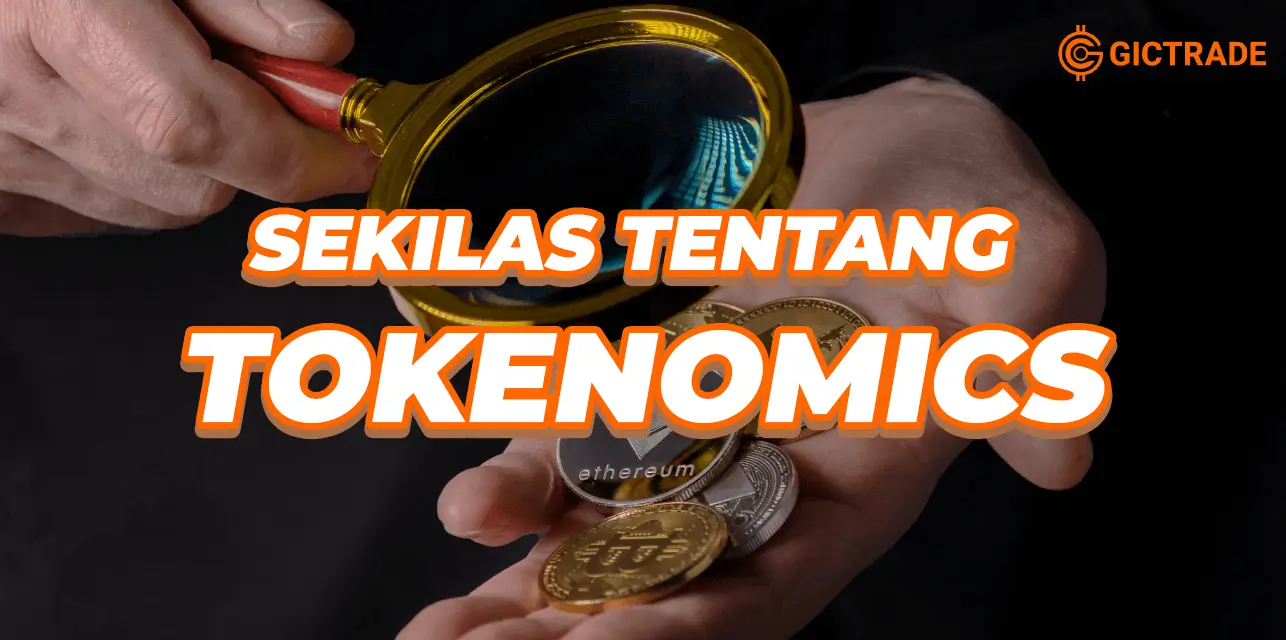Tokenomics Is?
Tokenomics is a merger of the two words "token" and "economy," referring to the supply and demand characteristics of a crypto project. It takes into account the economics of crypto tokens: issuance, attributes, distribution, supply, demand and other characteristics. Let's check out what crypto tokens are. It is a digital currency unit built by a crypto project on top of an existing blockchain. Like regular currencies, crypto tokens have a certain value and can be exchanged. Regarding the economy, it will help to know how the token economy differs from the traditional economy. Regardless of the era in history, the government has created extra money out of thin air. Fighting wars or facing droughts can be very expensive. To deal with it, increasing revenue is not always an option and the authorities consider currency printing to be a simpler alternative. Creating additional currencies ultimately reduces the value of existing money. Crypto projects, however, are predetermined and algorithmically create issuance schedules for tokens. We can accurately predict the number of coins in circulation at any given time. The distribution of coins among various stakeholders was also thought out beforehand. While it is technically possible to change the issuance schedule and distribution plan, the process is difficult to implement.Types of Tokenomics
Here are some types of tokenomics itself. The types of tokenomics are:- Platform tokens: they create and support decentralized applications for different uses, from advertising for companies to video games. They are powered by blockchains where they are built to protect transactions made.
- Security tokens: also called digital keys, created out of concern for the use of these instruments. They are rights, shares, assets, or participation that investors earn, but are registered and stored in the blockchain.
- Transaction tokens are used for transactions or exchanges of goods and services, i.e. they are used as traditional currencies.
- Utility token: this is used to access and use certain services. The company sells utility tokens and utility tokens provide utility to their buyers.
- Governance tokens: these tokens allow you to make decisions, collaborate, and participate, and in some cases even vote in projects that involve you. They serve to support this project and provide greater consistency.
 at-a-glance-about-tokenomics[/caption]
at-a-glance-about-tokenomics[/caption]
Components of Tokenomics
For any beginner who is new to the cryptocurrency realm, it is important to be aware of the factors that may even affect the value of crypto tokens remotely.
Token distribution and allocation
One of the main factors that determine the value of a crypto token is how it is distributed. There are two ways to generate crypto tokens – either by pre-mining or by fair launch. By the phrase "fair launch," we mean that cryptocurrencies are mined, earned, owned, and governed by the community from the beginning. It is a decentralized network and there is no concept of private allocation here. However, with pre-mining, a portion of the coins are created (mined) and distributed before being launched to the public. A portion of the coins are sold to potential buyers in an initial coin offering (ICO). It is a way to reward founders, miners, and early investors with newly minted coins. So, if you want to make sure that the project you're investing in is legitimate and ambitious, make sure the project distributes their tokens to potential users.Token supply
A very important parameter required to study crypto tokenomics is the supply of tokens. There are three types of supply for crypto tokens — circulating supply, total supply, and maximum supply. The circulating supply refers to the number of publicly issued and circulating cryptocurrency tokens. The total supply, meanwhile, is the number of tokens currently in existence, minus all tokens burned. This is calculated as the total number of tokens currently in circulation and tokens that are locked somehow. Finally, the total supply cannot be equated with the max supply, which quantifies the maximum number of tokens that will be produced. Paying attention to the token supply could be a good indicator for its future. The circulating supply of tokens is increased by developers with active mining. If the circulating supply continues to increase, then investors can expect the value of the token to rise. Conversely, if too many tokens are released, their value could drop as well.Market Cap of a token
In the context of cryptocurrencies, market cap is a metric used to determine the popularity of a token. It is calculated by multiplying the token's current market price by the circulating supply. Market cap is a good indicator of a token's value, even in the long run. Therefore, small-cap cryptocurrencies are riskier. While large-cap cryptocurrencies often have the potential to guarantee better returns and security.Token model
Each crypto token has a model that ultimately determines its value. Some tokens are inflationary, which is why they don't have a maximum supply and can continue to mine over time. Quite the opposite is a deflationary token where the supply of tokens is capped at the maximum supply. Deflation tokens are useful for avoiding the circulation of unsold coins and are usually not affected by market volatility. Inflation tokens, on the other hand, do a good job of incentivizing miners, delegators, and validators in the network.Price stability
Tokenomics also shows how important it is to study the implications of price stability. Cryptocurrencies are known for their volatility, which may not always benefit investors. Fluctuations can often lead to a decrease in interest among investors. Furthermore, fluctuations can even cause the network to be restricted. Investors should ensure that the project is doing everything to combat such fluctuations. These challenges can be overcome by ensuring there are enough tokens to match supply levels. This will stabilize the price and thus, investors can use the token for its intended purpose. Tokenomics can also help developers to stabilize prices by creating a balance.Benefits of Tokenomics When Investing in Crypto
The main benefit of tokenomics is that it provides a more complete analysis of how coins work on their respective networks. For example, if the terms and conditions of an ICO indicate that a certain number of coins will be bought back by the issuer, it can have a strong impact on the price of the token. It should be noted, however, that a proper model of the coin must first be created before any economics can be studied. It also means that tokenomics should not come before designing a relevant business plan or concept for a new product or service that uses blockchain technology. Here are some other benefits:- The project is unique, its own idea governed by its rules, in a secure economy with blockchain technology. The rules for its development are clear and transparent.
- Its usefulness in the real world, as these projects can be invested as if they were shares in a company, adding value to the project and the economy.
- High elasticity, as it allows any value to be transferred from the real world to the virtual world and decentralized control, through blockchain technology (tokenization).
- It grants rights to its owners, such as governance, security, or access to services.
- It can be used for enrichment, or to motivate users.
- Secure and efficient payment methods.

 Last:
Last: 







